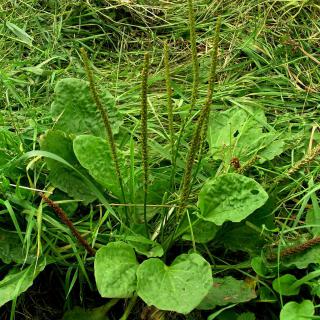One of the most engaging aspects of herbs is their lore. Women in particular spent a significant amount of time growing, gathering, processing, and using herbs all day, every day, for much of humanity, so of course a literature of its own grew around them. Because herbal knowledge was passed on through oral tradition, many rhymes and rhythms were involved for easier memorizing. Keep in mind that for most of humanity’s time, the majority of people were not literate, and even when the populace started to learn to read and write, it was the males who were educated long before females. Grandmothers had no other options for passing along remedies, rituals, and traditions than through songs and poems. By the way, I recently learned that wife (wyfe in old English) was just another word for woman before it had the marriage connotation, just as ‘wort’ is the old word for herb. When you see a plant with wort in the name such as mugwort, motherwort, St. John’s wort, etc, then you know it’s had a long history of herbal usage.
Herbs have such rich lore attached to them that they can be tied to certain planets and/or astrological signs, or the moon or sun, they are said to govern over certain professions and/or aspects of life such as willows are the tree of poets and artists while bay laurel is the herb for creativity, they of course each have many medicinal attributes, divination use, and roles in rituals and rites. They also have their own language such as a red rose given from one person to another means romantic love, while rosemary means friendship and remembrance. There are many charms and symbolism with herbs as well, and since we could all use a bit of luck, protection, and magic, here are some ideas to consider:
Growing sedum, known as hens and chicks, will protect your home and garden, especially from lightning. Here’s a traditional rhyme about it:
“Round and green, hen and chick Sting of burns allay Rosy leaves will stick and prick But keep lightning away”
A white hawthorn hedge protects the garden and home from bad luck and mischievous spirits.
Feverfew hung in the house cleanses it and wards off disease as well as treats melancholy when applied to the head. (Make a crown of feverfew and I’m sure you will be jolly indeed!)
Garlic wards off evil and disease. Putting a sprig of mugwort in your shoe prevents weariness, however, if you do this on Midsummer’s Eve you run the risk of being carried off by a white fairy horse which will then leave you stranded! This one is timely for the quarantine I’ve heard~ if you have had a falling out with your spouse, you are to each give each other pennyroyal to make amends. Growing sage assures a happy house and that the woman there is the master. Eating sage ensures a long life as this traditional rhyme promises:
“Those who would live alway Must eat sage in May.”
I don’t know about you but I want to plant all the plants possible just to be on the safe side because it seems they all have their specific domains to give luck and protection to. This is a very small snapshot of herbal lore of course because it is a vast history with variations as plentiful as the individuals who passed this history on. If you enjoy this aspect of herbalism, I recommend the book, Mugworts in May by Linda Ours Rago, which is where I got most of the above little tidbits. I hope your July is magical and your hearth and home are protected and graced with luck for the rest of the year.
Like this:
Like Loading...

















